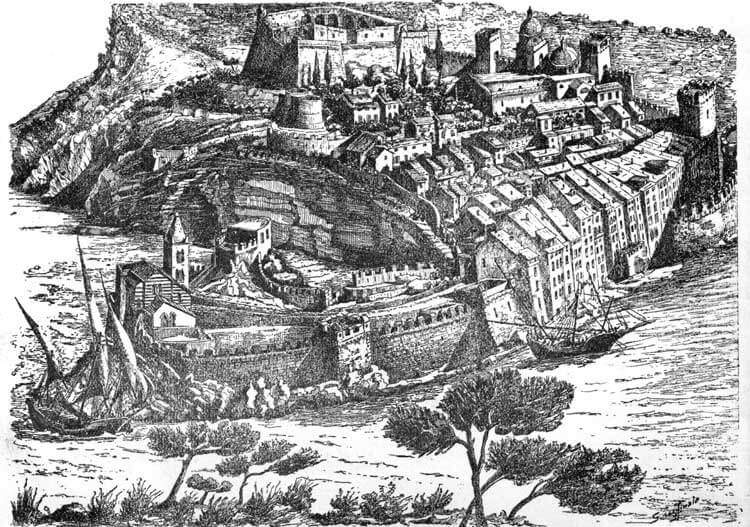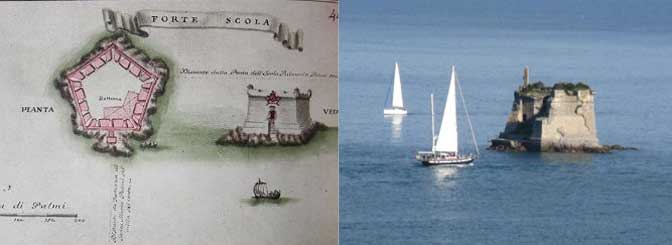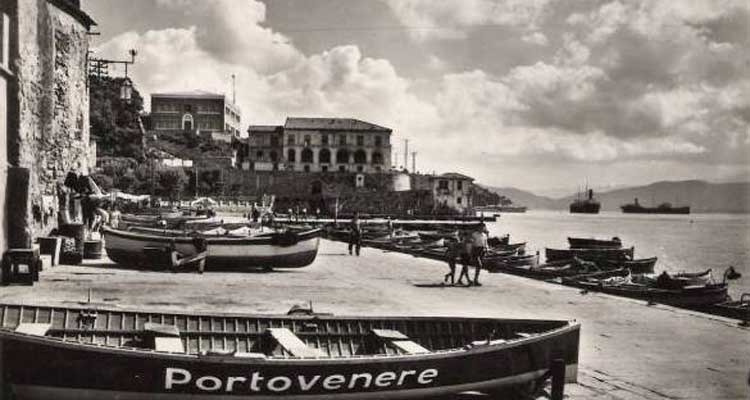“The shore appears to those arriving by sea: Portovenere is here, on the hills covered by olive trees, and such sweetness made Minerva forget about her homeland, Athens.”
This is how Italian scholar and Renaissance poet Petrarca (Petrarch) celebrated Porto Venere in 1338 and tied its name to Roman mythology, although legend and facts still mix when it comes to this particular aspect of the history of Portovenere.
In fact, it has been said that the ancient name – Portus Veneris – refers to a temple dedicated to the goddess Venus, which was located on the promontory where the Church of St. Peter now stands. The name has also been linked to that of the hermit monk Venerio. Today he is celebrated as Saint Venerius, protector of the lighthouse guardians because, according to legend, during stormy nights he would light huge bonfires on the Island of Tino to save ships out at sea in the Gulf of Poets.
Ancient Portus Veneris is believed to date back to at least the middle of the 1st century BC. In Roman times the city was essentially a fishing community, as documented by Roman Emperor Antoninus Pius (161 a.D.) in his maritime diary.
With the fall of the Roman Empire, Porto Venere became a base for the Byzantine fleet, which was eventually destroyed by the Lombards in 643. Later, it was a frequent target of raids by Saracen pirates. First indications of the existence of a castle date from 1113, the year in which Genoa acquired the village from its feudal lord, Grimaldo of Vezzano.

Portovenere was a strategic point, needed in Genoa’s war against Pisa for the domination of the Ligurian Sea. The Doria Castle, fortified walls and other structures were built facing the sea with precise architectural principles for residential and defensive purposes. The Genoese also erected the Romanesque Church of St. Lawrence in 1098, while the Gothic Church of St. Peter was consecrated in 1198.
Pisa tried to overtake the fortified village on different occasions between 1165 and 1198, but did not succeed. The troubles started in 1494, when Portovenere suffered a devastating bombardment from the Aragonese fleet during their war with Genoa. Subsequently, the old part of the town declined in importance, giving way to the development of the Borgo Nuovo (“New District”), centered around the church of St. Peter.
In 1575, Genoese condottiero Andrea Doria launched the erection of the modern military seaport in the Gulf of La Spezia. In 1606, he built a small fortress named La Torre Scola on Palmaria Island.

The history of Portovenere proceeds with the French domination under Napoleon Bonaparte, when in 1797 it became part of the Department of the Gulf of Venus in the Ligurian Republic. Subsequently, it was annexed to the First French Empire from 1805 to 1814, a historic period during which the “Strada Napoleonica” (Napoleonic Way) was built in honor of the French general. This coastal road today corresponds to Strada Provinciale 530 that passes through the villages of Fezzano and Le Grazie.
Portovenere and the local territory became part of the Kingdom of Sardinia in 1815, and of the Kingdom of Italy in 1861.

In the early 1800s, Portovenere became a destination for elite tourism thanks to illustrious figures such as English poet and a leading figure in the Romantic movement, Lord George Gordon Byron. Poets and artists continued to be bewitched by the medieval village, including Nobel Prize winner Eugenio Montale, who dedicated a poem to Portovenere in 1925. An enchantment that attracts visitors still today, between the pristine nature and historic buildings of the jewel in the Gulf of Poets.
For more on the History of Portovenere, read our interview with journalist Gino Ragnetti about the Historical Curiosities of the Gulf of Poets .
Discover more from Discover Portovenere Blog
Subscribe to get the latest posts sent to your email.
1 Comment